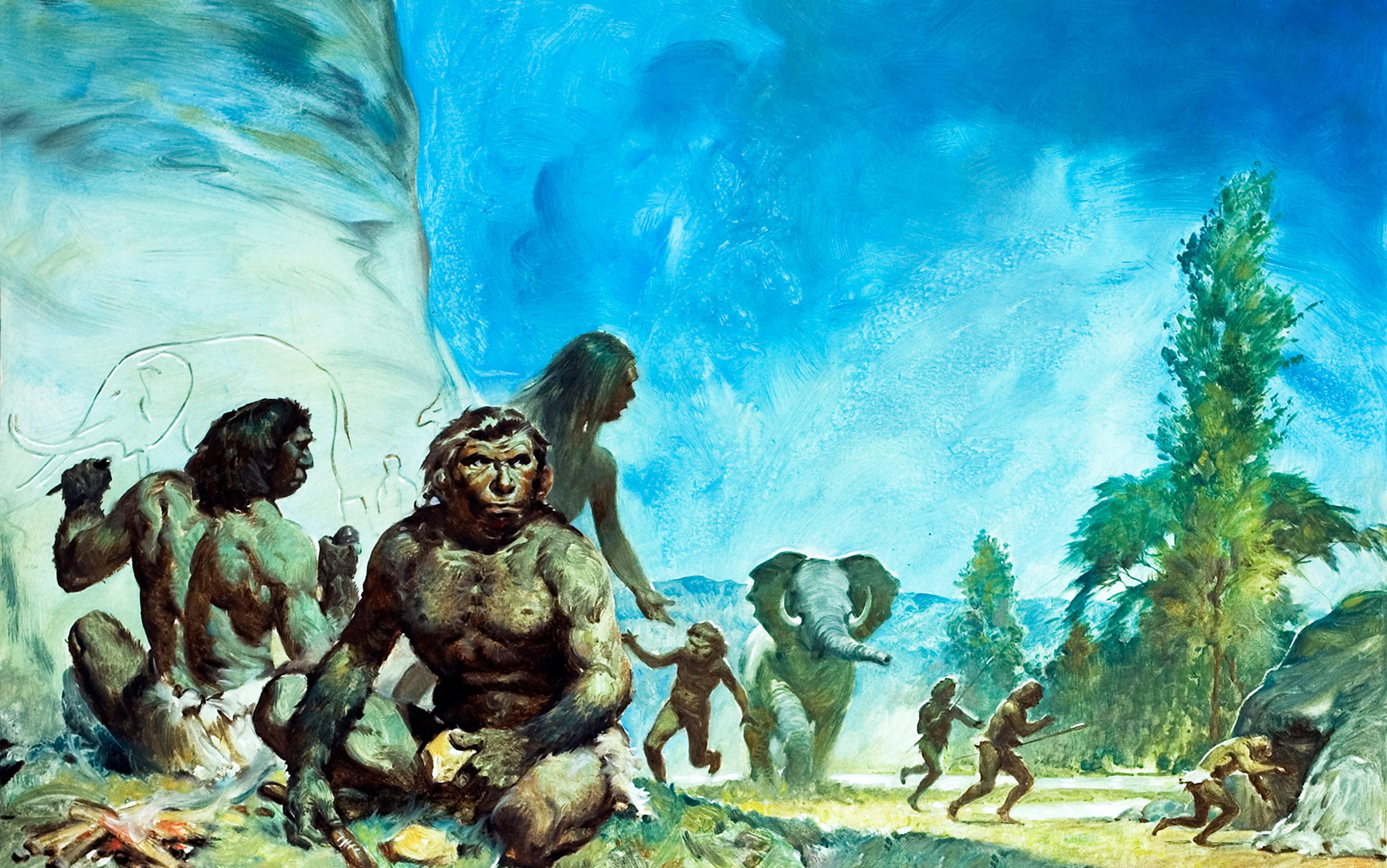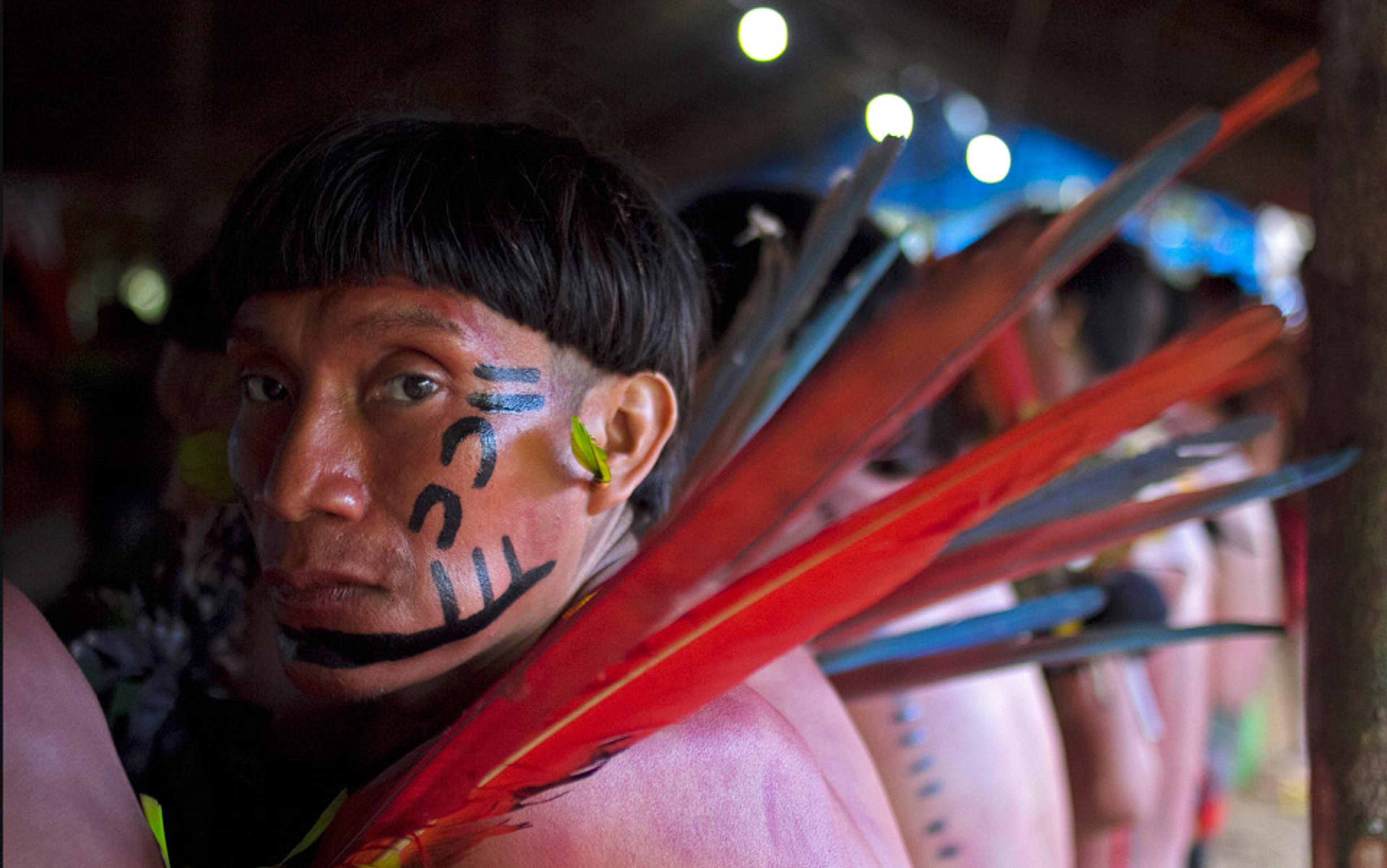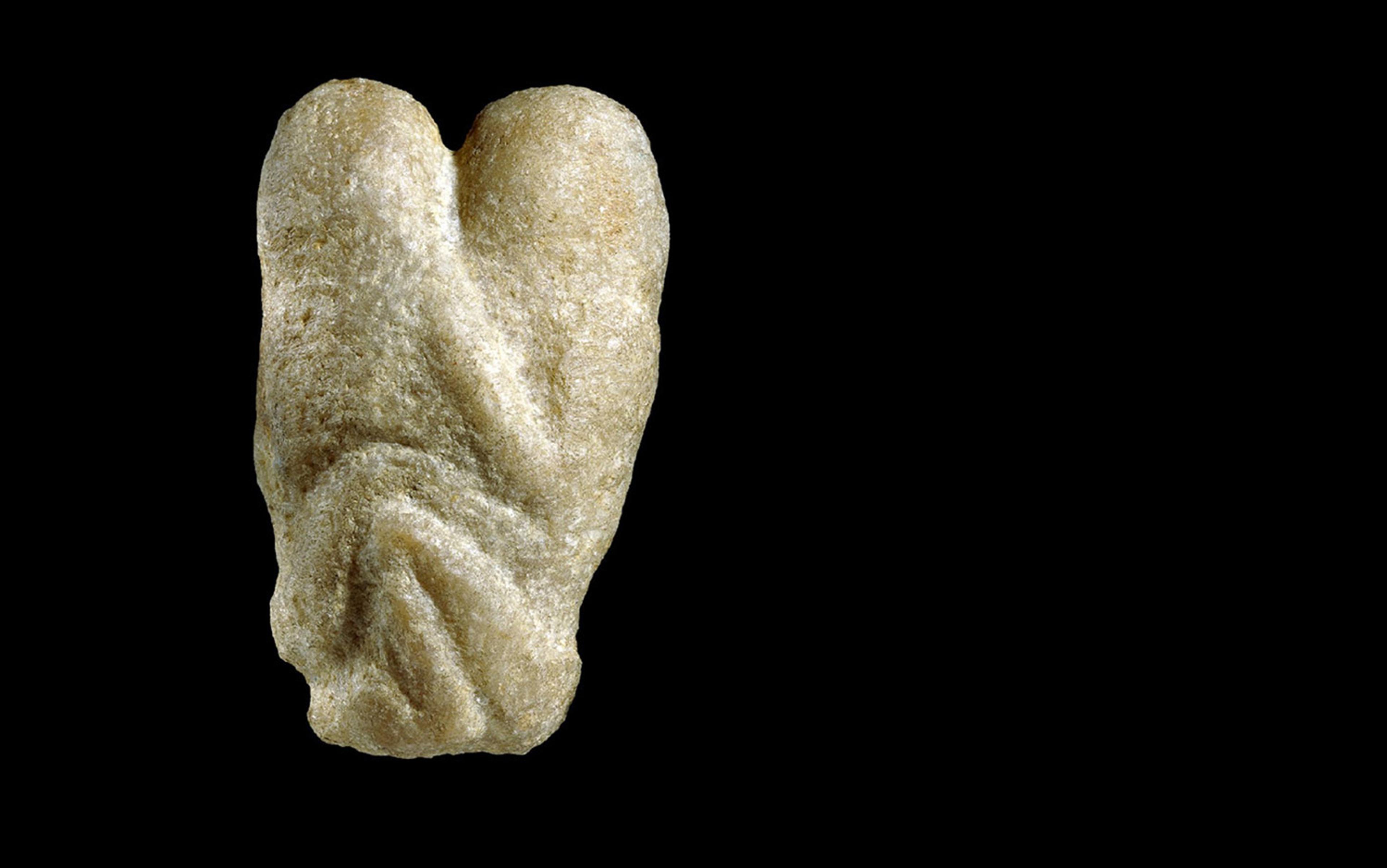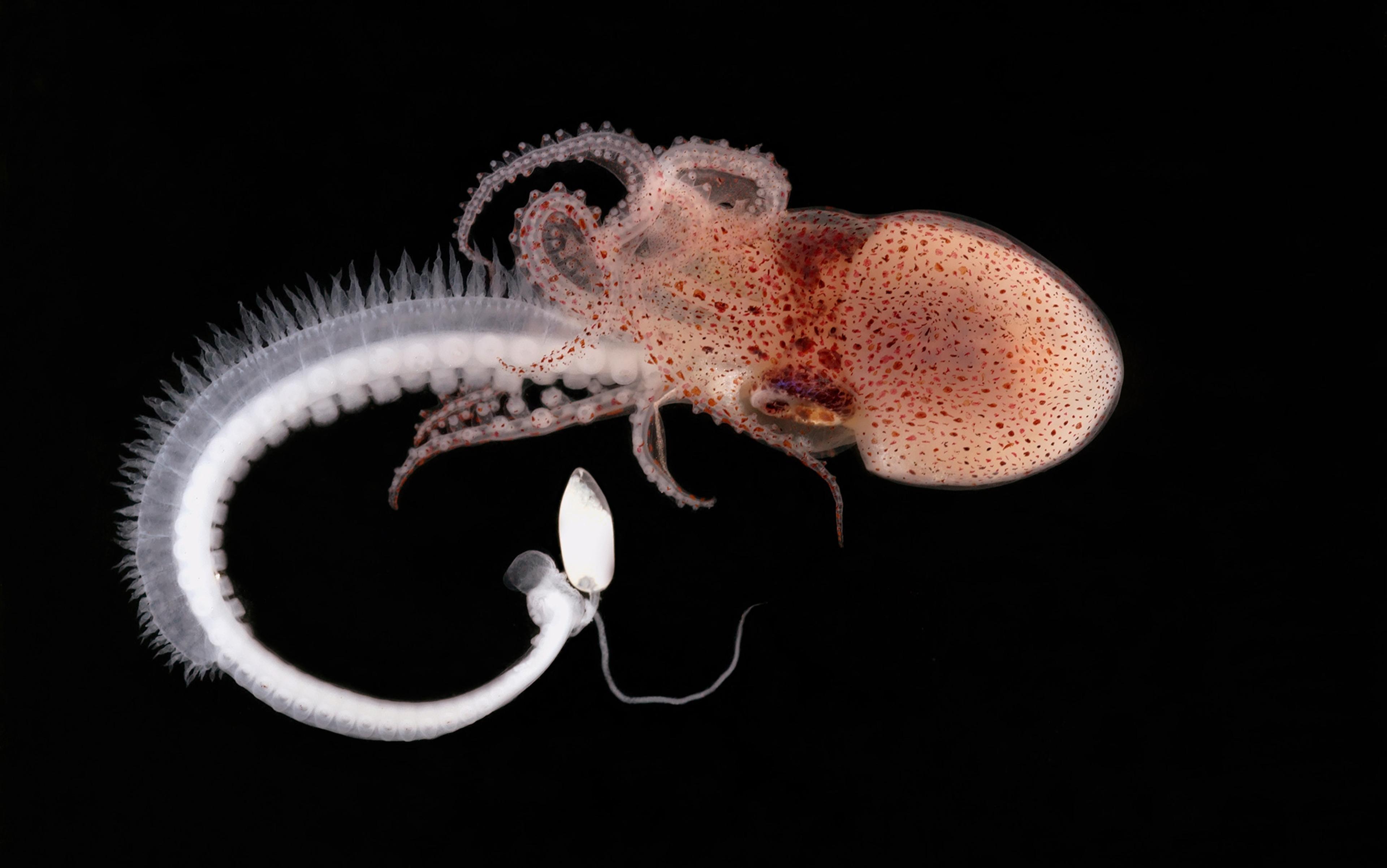Someday, people with penises will gestate foetuses. I am speculating, of course, but not wildly. If babies can be conceived in a test tube, that is, if we can amend the erstwhile rules of reproductive biology this way, why can’t people with penises gestate foetuses, lactate, and do other things associated exclusively with the uterine body? We’re used to the idea that physiological differences dictate rigidly different ways of participating in sexual reproduction. Or at least, that’s the way it’s been so far.
As more and more people are recognising today, biology and sex turn out to be a lot less fixed than we might have once thought. And, importantly, politics is involved in how much our understanding of biology, sex and gender can and should change – and the direction of change.
Commonplace notions of biology and sex continue to influence what we take as natural and given, including the belief that men don’t get pregnant. (And as important as it is to point out that trans men can get pregnant, I am addressing a rather different set of challenges in this essay.) A question I often ask my students in a class on gender and science is this: how many effective and widely available new forms of birth control have been developed in the past 100 years for men? It’s a safe assumption that my captive audience is in the first years of learning about and utilising contraception. Why had so few considered this situation unfair and overly burdensome on women? Why was there still no easily accessible kind of artificial birth control for men other than the condom, which after all has been around in one form or another for at least hundreds of years?
They knew why, because we all know why: no matter how much we talk about gender equality, the implicit assumption often ends up being that men and women are, deep down, different. Only people with female reproductive organs get pregnant, and somehow this has come to mean that women should be more responsible for contraception. Or at least that’s the unspoken belief of many, despite the fact that no one with female reproductive organs ever got pregnant without help from someone with male reproductive organs.
We still live in an age of the gender binary, but it’s also a time of mass gender confusion, debate and renegotiation disputing the gender binary. And that’s a great thing. Assumptions and shibboleths about gender (and sex and sexuality) are being defended and challenged, and language is being recast – think about the sudden transformations of pronouns people are using to refer to themselves. Language matters, and with respect to gender and sexuality I have come to the conclusion that we need to be very careful indeed when we make unwarranted comparisons about common ‘male’ and ‘female’ traits among humans and nonhuman animals. Among other things, there is a whole lot of exaggerated anthropomorphism that tickles our curiosities and satisfies our quixotic yearnings but reinforces erroneous stereotypes about male and female.
Among my favourite examples are prostitute hummingbirds, baboon harems, and mallard duck gang rape.
Some wit thought that when male and female hummingbirds have sex, and the male ‘gives’ something, like a twig for a nest, to the female, the male is in effect paying the female for sex. And that’s what prostitution is all about, isn’t it? The idea that sex work involves a complex network of relationships, and that humans who have sex can also give each other presents without this in itself constituting sex work, is apparently not relevant here. The point is that males pay females for sex (and that this payment is the only reason females allow males to have sex with them), and that there are strong enough cross-species similarities to justify such language flourishes.
When I was young and just learning about sex, I learned about something called a harem. It was an arrangement in some other parts of the world, we thought, where a man could have many wives, and have sex with any one of them he chose. We believed that, if one wife didn’t want to have sex, there would always be another available. So, it’s not strange perhaps that virtually every primatologist who has ever spent the night on a savannah with a troop of baboons has resorted to the shorthand description of ‘harem’ to describe a situation in which one male mates with many females. Not to get too anthropologically nit-picky, but I must object: in dozens of papers and books I have read by these primatologists, I have yet to come across one sentence about, much less a fuller description of, an actual human harem, the cultural and social contexts in which they are found, the agency of females as well as males in these relationships, or any aspect of volition and choice in such arrangements. An adolescent fantasy seems to be the most likely explanation for this salacious anthropomorphism about harems among baboons.
Finally, the matter of mallard ducks and the fact that perhaps 40 per cent of copulations are coerced, an activity that has been called ‘gang rape’ of a solitary female. Even calling this conduct ‘forced copulation’, which might be considered a step in the right direction, still lands us in semantic quicksand, erroneously confusing what is routine behaviour that leads to impregnating the female duck with the actions of human males who consciously decide to sexually attack a female. It also implies that female humans and female ducks are comparatively the same, passive victims and receptacles of male aggression and sexual predation. (For a brazen invocation of the mallard duck gang-rape thesis, see David Barash’s book Sociobiology: The Whisperings Within (1980); for a detailed and thorough takedown of the thesis, see Richard O Prum’s prizewinning book The Evolution of Beauty: How Darwin’s Forgotten Theory of Mate Choice Shapes the Animal World – And Us (2017).)
It matters what language we use to describe and explain human behaviour such as prostitution, harems and gang rape, among other things, because it gets to the gist of how ‘animal’ we are: how much we share in common with other animals; how much we have control over our actions; what are fundamental, hardwired (or genetically programmed, evolutionarily driven, chromosomally relevant) differences between male and female humans that relate, for example, to sexuality and aggression; the extent to which the males of all species and the females of all species share some fundamental features in common and, if so, what they are; and which allegedly cross-species male attributes represent a relic of outmoded social values more than anything anatomical.
Let’s consider the 220 million cats and 200 million dogs (and counting) worldwide that we call our pets: how often do we bestow them with human names? How often do we compare their personalities with those of friends or family? We humanise nonhuman animals. And, pretty easily, we extend this line of thinking to humanise nonhuman animal behaviour. We animalise humans, which really means we dehumanise humans, making their actions and desires products of inherited traits more than conscious decision-making and volition. Some have even argued that the role of society is exactly to tame and restrict these supposedly innate, mammalian instincts in humans. As the anthropologist and primatologist Agustín Fuentes wrote in Race, Monogamy, and Other Lies They Told You (2012): ‘It’s a commonly held belief that if you strip away culture, that which keeps us well behaved, then a beastly savage will emerge (especially in men).’
In one of my classes I teach about gender and science, I have used the examples of hummingbird prostitutes, baboon harems and mallard duck gang rape. A week after we discussed how such anthropomorphism could lead to woefully incorrect understandings about human sexuality, a student returned with the following anecdote: she had just heard a lecture in her biology class in which the professor used the phrase ‘gangbanging bacteria’. Not even animal gangbanging in this instance! Amusing or alarming?
Although the term ‘toxic masculinity’ has captured the imaginations of many people who want to call attention to men thinking and acting in ways that are harmful to others, male and female, it is also problematic. Because, if you believe that someone who identifies as male can act only within a range of masculinities, and by definition everything they do is on a masculinity continuum of some kind, you are still stuck in a very binary world. Would it make sense to talk about the toxic masculinity of certain male hummingbirds and ducks? Yet ideas about males-of-all-species often lie just beneath the surface of contemporary discussions about the gender binary and, indeed, widespread discussions and debates regarding gender and sexuality.
Efforts in recent years to dismantle neat male-female models have been met with stiff resistance in both religious and scientific quarters. Evolutionary biologists, for instance, have argued vociferously that male-female differences with respect to sexuality and aggression are core components of what it means to be human and animal in general. Among the theological responses to challenges to the gender binary we find one from 2019, when the Vatican published ‘“Male and Female He Created Them”: Towards a Path of Dialogue on the Question of Gender Theory in Education’, written by Cardinal Giuseppe Versaldi and Archbishop Angelo Vincenzo Zani. Apparently, the Vatican had decided that gender confusion among its 1.2 billion parishioners worldwide had reached epidemic proportions. Their ‘Male and Female’ paper faithfully endorses the gender binary as God-given, and cautions that any and all notions of gender bending go against not only God but also modern medicine and science.
We pathologise maleness and reduce public policy to restraining males’ ‘natural’ impulses
By censuring anthropology’s examination of gender and sexual indeterminacy as too relativist, and asserting that male and female bodies and temperaments are fundamentally unalike, the gender binary gets sanctified as reality, and it becomes easier to attribute every form of male behaviour – including those related to sexuality and aggression – to the natural, unchangeable world.
This is a time of gender confusion and instability as to what the connection is between physiology and temperament, especially when it comes to male and female. Efforts to delink aggression from something that is considered characteristically and particularly male – in effect, to de-gender our concept of aggression – must inevitably contend with the gender binary. And this is threatening to those with a vested interest in maintaining a view of the world in which perceptions about our biology, and our evolutionary heritage, are reduced to ageless Mars/Venus frameworks.
Yet objections to the gender binary view of the world have implications far beyond spiritual disputes, beyond how many credible parallels we can draw regarding engendered behaviour in humans and, for example, monkeys. Monkey see, human do? Biological extremism gets us into trouble repeatedly, many times without us even realising that our assumptions about differences are based on little more than common sense.
Although most discussions about rape don’t involve mallard ducks, references to ‘rape’ in the nonhuman animal kingdom surely resonate with the idea that there is something natural about rape across species, and therefore that it is, at most, possible to control among humans, but never eradicate, because it is biologically baked in. Thus do we pathologise maleness and reduce public policy to restraining males’ ‘natural’ impulses.
The leading anthropologist of gender and violence Sally Engle Merry has underscored the ease with which the criminalisation of gender-based violence – in her study, spouse abuse in Hilo, Hawai‘i – is naturalised. Husbands beating wives is treated by the courts in Hilo as ‘natural to men’, while men attending state-mandated programmes ‘discover that the authority of the court is exercised against their customary control over women and that their “natural” behaviours are penalised.’
Half a world away, Maria Eriksson Baaz and Maria Stern conducted research on why vast numbers of male soldiers raped women during the war in the Democratic Republic of the Congo (DRC) in the 1990s and 2000s that killed more than 5 million people. Interviewing officers and soldiers, men and women, these scholars were repeatedly told that there had been two kinds of rape in the DRC: ‘lust rape’ and ‘evil rape’. Male sexual needs caused lust rapes; evil rapes were triggered by men’s need to destroy. Lust rapes were directly linked to the sexual deprivations of wartime.
In the words of one male lieutenant colonel in the Congolese army: ‘Physically, men have needs. He cannot go a long time without being with a woman. It is very difficult to stop him.’ A female major told Eriksson Baaz and Stern: ‘So, the way our [male] soldiers are raping, it is because of lack of money. Maybe he has not been with a woman for 3-4 months and has no money on his pockets. What is he supposed to do?’ As the authors of this study conclude, men’s sexual needs ‘emerged as a given, known, natural driving force which required “satisfaction” from women whose role it is to satisfy these needs.’
In 2007, I was in Haiti interviewing United Nations officials, and UN peacekeeping soldiers, officers and police, about ‘sexual exploitation and abuse’ by UN personnel against girls, women and some boys in the local population. News reports about the rapes of innocent civilians and troops paying for sex with Haitian girls for a cookie or a dollar had become an international disgrace. One of the people I interviewed was Daniel Morales, who was part of the Peruvian contingent among the UN Peacekeepers. We talked in his barracks during a break from his routine patrols. He maintained a line of reasoning that I heard in one form or another from other military officers and UN personnel: ‘If you put men in a situation where they are not going to have sex for three months, that is a challenge, but not insurmountable. If you extend this to six months, well, that is far more difficult. Beyond this point they become unmanageable.’
Male hydraulics seemed to explain why you could expect men to tamp down their sexual needs for only so long before they needed relief. The UN therefore always tried to facilitate nearby ‘rest and recreation’ sites for peacekeepers to seek sexual release in a nearby country. In the case of Haiti, this most often meant trips to the Dominican Republic. The long and often shameful history of armies providing sex workers for soldiers is notorious; for example, Paul Fussell, in his study of the First World War, characterises prevailing sentiments at the time: ‘Prolonged sexual deprivation will necessitate official brothels – in the Great War, “Blue Lights” for officers, “Red Lights” for Other Ranks.’
Yet as much as wars, including the First World War, provide ample illustrations of commonplace notions of males’ violent animality, as the historian George Mosse has also shown, in the manly language of war – think: pain, suffering, duty, sacrifice, fortitude, honour, chivalry – we can find both war fever and antiwar resistance.
Shared animality could become more referential than explanatory
In The Image of Man (1996), Mosse wrote that: ‘The warrior provides a climax to a concept of manliness inherent in much of the construction of modern [Western] masculinity … The Great War was a masculine event, in spite of the role it may have played in encouraging the greater independence of women.’ The First World War was not caused by masculinity or maleness any more than societies exist because of men. But manliness was central to inspiring, facilitating and resolving every aspect of that war, from the doughboys in the furrows and foxholes, to the flying aces and their aerial acrobatics. According to Mosse, as great and obvious as the divisions between opposing nations were, ‘the crucial role played by modern masculinity in upholding the clear division between men and women, so basic to modern society over the past centuries’ also proved fundamental to the wartime ethos. Men and not women were violent, or potentially violent. A man’s physique was naturally inscribed with manly aggression. More, ‘The manner in which the war was waged on the western front encouraged the view of war as dependent on a functioning male camaraderie as soldiers fought, lived together, and died together in the trenches.’
That naturalised camaraderie was to morph years later into the infamous phrase ‘male bonding’, first formulated in 1969 by the biological anthropologist Lionel Tiger to defend his very modern opinion that ‘men “need” some haunts and/or occasions which exclude females’.
One memoirist of the time described the First World War as being what Mosse later called ‘a struggle for existence in which man’s animal instincts were released’. With a populace all too eager to lionise carnage in the name of nation, women, children and other ideological causes, nonetheless, Mosse writes: ‘Most of those who were disillusioned with war tended to join Left-wing movements, and if they became socialists they were apt not only to reject war but to question the manliness that had supported the conflict.’
All the same, pro- and antiwar men could share more than a few similar notions about masculinity and manliness. As Mosse wrote: ‘for all the difference in the conception of masculinity, the identical ideal of moral purity united these socialists and those who believed in the normative ideal of manhood; both shared the view that the generally accepted standards of personal comportment and sexual behaviour were crucial aspects of masculinity. The significant difference lay in the attitude toward political morality, in the acceptance or rejection of aggression and violence.’ And with that, the acceptance or rejection of attributing natural aggression and violence to human males.
By questioning the link between aggression and maleness, the doctrine of male animality could also be tested, and shared animality could become more referential than explanatory.
Pseudoscience beliefs that we find throughout the world today regarding animal maleness are embedded in the language of daily life. Animality is central to the vernacular of male sexuality and aggression, as if human behaviour is solely and best understood as a branch on the tree of bestial evolution. Enormous attention has been paid in recent decades to changing language that naturalises female bodies, to showing that female biology is not female destiny. We have spent less time disturbing language carelessly applied to males, especially that which exculpates male behaviour by blaming monkey-like genes and hormones.






